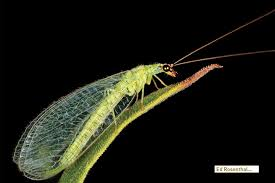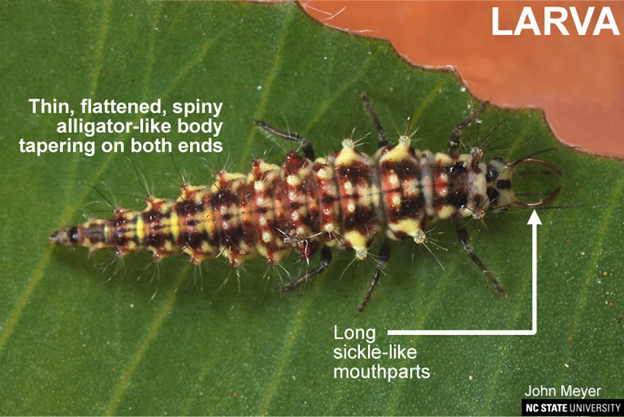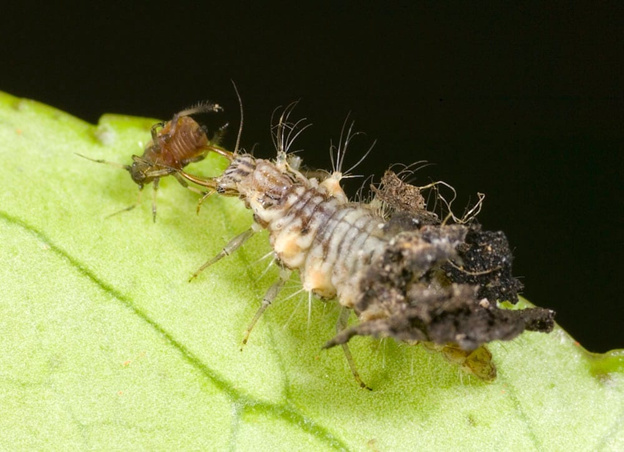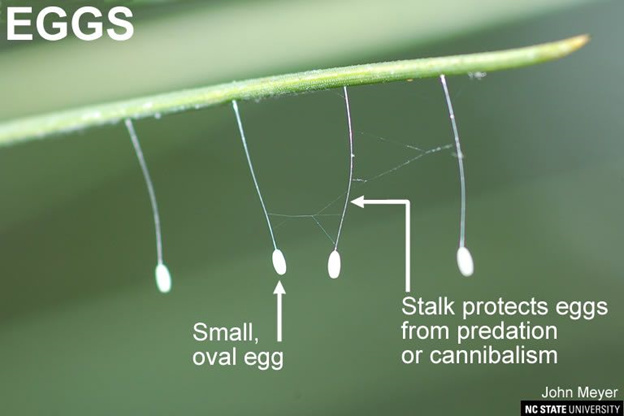Today I wanted to expand on the know your friends series a little bit with one of the less commonly used beneficial insects that can be used to wreak havoc on your enemies.
This is Chrysoperla Carnea, also known as a Green Lacewings.

Don’t get too attached to the idea of having swarms of deadly and beautiful dragonflies flitting about your gardens, unfortunately the adult Lacewing is not predatory, and subsists on nectar or pollen as can be found in your area. This of course means that you can plant certain species of flowering annuals in order to attract them to your area, or keep them in it and hopefully encourage them to reproduce.
The predatory instar of these little monsters take the notion to the next level, behold:

Nature is a vicious mistress, and this horrible creature is actually one of the best friends you can have in your garden. They are a deadly generalist predator, able to feed on mites aphids and a variety of other pests that may inhabit your garden. They are also known by the epithet Aphid Lions and now you’ll know why its so fitting

Pictured above you’ll see an aphid lion making use of the spiny protrusions on its back. The pincers in front serve the dual purpose of both injecting a paralytic enzyme into its victim as well as drawing out the body fluids from the pest, rendering it into a shriveled carcass that it displays prominently for religious purposes (just kidding but theres no evidence that it doesn’t)

Lacewing adults can lay up to 200 eggs at a time, and they are suspended on thin hair-like filaments to protect them from predation. A pale-green color when first laid, the eggs will turn to an opaque gray color just prior to the larvae emerging which takes about 5-10 days. Larvae go for about 2-3 weeks before they enter the pupal stage and cocoon themselves. During this 3 week period they will individually consume more than 200 pests.
Lacewings are available in a variety of delivery methods. You can purchase release cards that just contain the eggs and can be hung among the canopy of your crop. In my opinion the best bang for your buck comes from purchasing the larvae themselves so that they can be placed right into any areas that you are having a problem and get themselves straight to work.
In the event you are trying to establish a reproductive colony, you can purchase the adults themselves and try to create an environment that is most conducive to their survival; namely one that has ready sources of nectar or pollen. Insectary’s use an artificial diet of Wheast powder, sugar, and water to mass-rear their populations. A similar mixture can be created on a smaller scale as well and even be applied as a foliar.
Anyone have any experience using Green Lacewing in their gardens or having them naturalize in your outdoor fields?